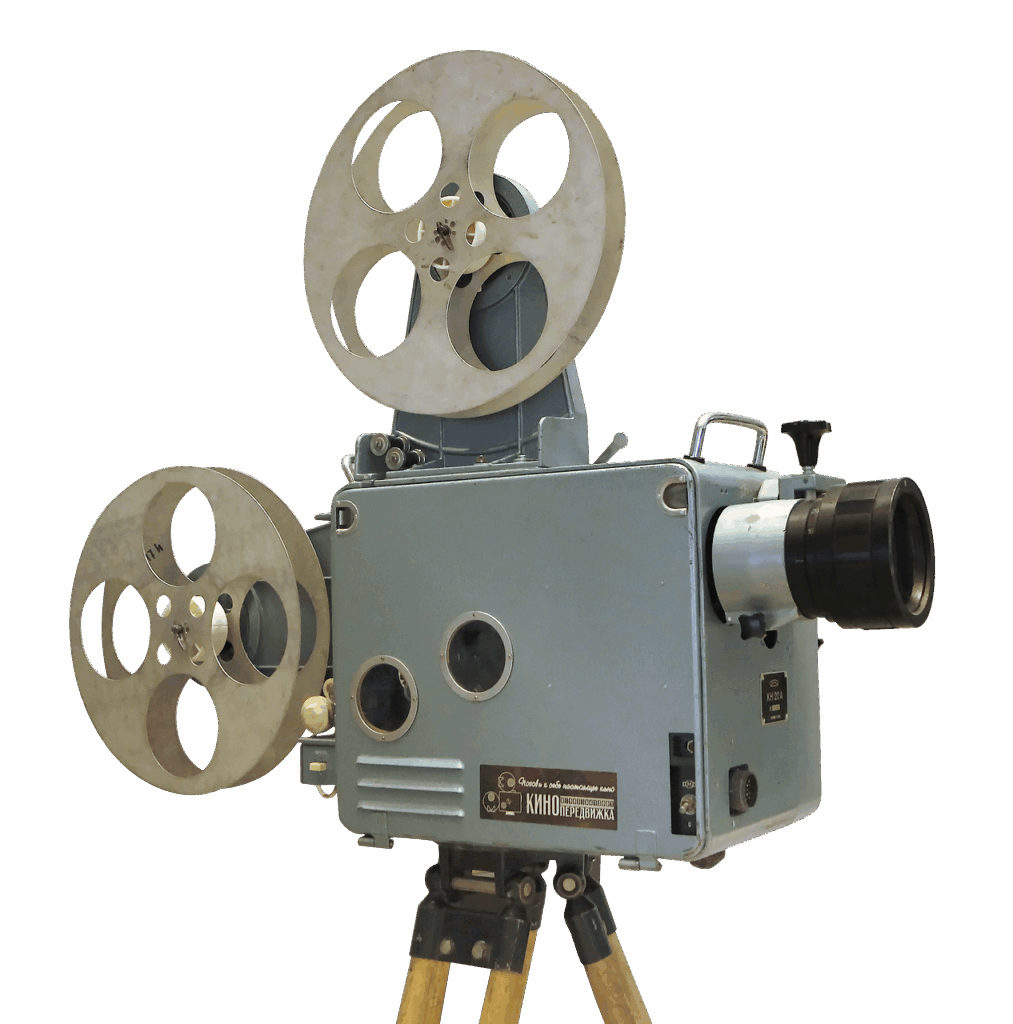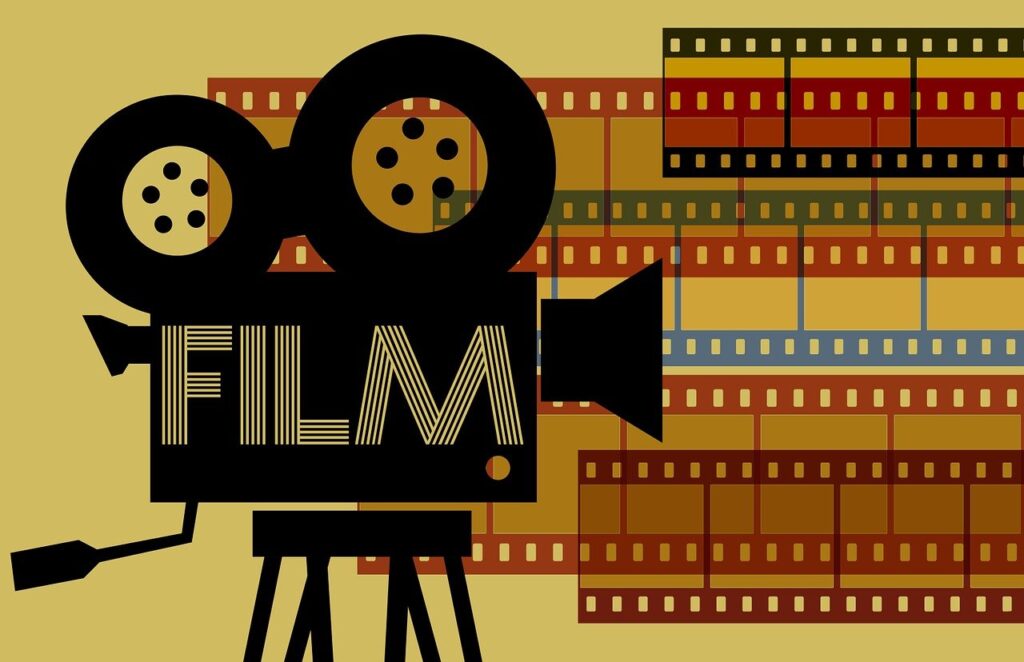
The allure of filmmaking is undeniably powerful, drawing aspiring creatives into a world brimming with visual splendor and narrative ambition. Yet, beneath the polished facade of every blockbuster and indie darling lies a battlefield of logistical nightmares, technical malfunctions, and human unpredictability. What viewers rarely witness are the countless challenges involved in making a movie or television show, pushing the limits of problem-solving for even the most seasoned crews.
Indeed, when it comes to a film shoot, it’s rarely a matter of *if* problems will arise, but *when*. The complex interplay of equipment, cast, and crew means that a film set is truly a place where Murphy’s law applies, offering plenty of opportunities for things to go awry. From unexpected storms that rewrite schedules to equipment breakdowns that halt momentum, these hurdles can test the mettle of even the most resilient production teams, turning a dream project into a veritable ‘problem child’.
This article delves deep into some of the most common and tenacious challenges faced during filmmaking, offering a behind-the-scenes look at the chaos and the ingenious solutions that keep productions rolling. We’ll explore the immediate on-set occurrences, from the fickle nature of human availability to the relentless unpredictability of the environment and technology. Because in this intricate dance of creation, understanding these obstacles is the first step toward transforming potential disasters into opportunities for creative triumph, proving that ‘knowledge comes with experience.’

1. **Cast and Crew Absences & Lateness**Few things can unravel a meticulously crafted production schedule faster than the unexpected absence or tardiness of a key cast or crew member. This isn’t just a minor inconvenience; it creates ripple effects throughout the entire production pipeline, especially when core team members are juggling multiple projects. The seamless coordination of talent is paramount, and when that coordination falters, the entire day’s plan can crumble, turning a productive morning into a scramble to fill unforeseen voids.
When a cast member is merely late, the immediate challenge is to utilize that extra setup time wisely. This often means running lines or rehearsals with other actors, testing out more ambitious lighting or camera set-ups, or, if possible, filming scenes or angles where the missing actor isn’t needed. Such flexibility demands quick thinking and a pre-existing plan B, as production teams must adjust shooting schedules faster to maintain any semblance of order in an environment where every second counts and delays can get pricey fast.
The situation escalates dramatically when a cast member doesn’t show up at all, or a crucial crew member, like a cameraman, goes missing. The solution, in these moments of crisis, is to “always, always already have a backup plan.” This could involve having a second set of scenes prepared, allowing the team to “cobble together a new shot list based on who is actually on set and available.” The harsh reality in such high-stakes environments is that “everyone can be replaced,” sometimes even with an extra or a crew member, a testament to the industry’s relentless drive to keep moving.
Even if someone has to leave early, the pressure remains. The day must be restructured so that the person or persons who have to leave early do all their scenes first. This might mean prioritizing shots, focusing on “all their coverage or angles where they’re the only ones in frame,” and then having a different person read their lines for the other actors. It’s about figuring out “the bare minimum you need to get done,” recognizing that you might have to “sacrifice a beautiful yet complicated setup, but that’s the risk of filmmaking on a shoestring.” These “Cast Availability Conflicts” are big hurdles, especially with in-demand talent, making buffer days and backup plans essential for smart productions.
2. **Unprepared Actors: The Line-Memorization Labyrinth**The moment an actor arrives on set without their lines memorized can be as disruptive, if not more so, than an actor not showing up at all. It halts momentum, drains precious time, and creates a palpable tension that can spread through the crew. This particular challenge demands a delicate balance of patience and pragmatism, as the creative flow clashes with the hard realities of a ticking clock and a finite budget, highlighting how crucial preparation is for all involved in the complex machinery of a film set.
For traditionally filmed shows, where a single scene is captured from multiple angles, there are tactical solutions to mitigate this. One approach is to film the actor who hasn’t memorized their lines last, granting them crucial extra time to practice and solidify their performance. Alternatively, filming in small chunks can be effective. Since the scene will ultimately be pieced together from many takes anyway, focusing on a small section at a time, rather than trying to go through the full scene all at once, allows for gradual progress without overwhelming the performer or the production schedule.
However, if the production is filming in a found-footage style, where continuity and uninterrupted takes are paramount, the approach shifts. In such cases, the strategy might involve finding somewhere in-world to cleverly hide the script, allowing the actor to reference their lines discreetly within the scene. If neither of these options is viable, rescheduling the unmemorized scenes for later in the day offers a window for the actor to get up to speed. Yet, the text starkly reminds us that “in a lot of ways, an unmemorized actor is as bad as an actor not being there at all,” implying that, depending on the circumstances, recasting might even be a necessary, albeit drastic, consideration.
3. **Insufficient Extras: The Art of Illusion**Extras are the unsung heroes of many film scenes, providing the crucial backdrop that makes a fictional world feel real and populated. However, what happens when the casting call yields fewer background performers than anticipated, or budget constraints limit the number of available bodies? This common problem forces filmmakers to get incredibly creative, turning a potential visual void into an opportunity for resourceful illusion, ensuring that the scene retains its intended vibrancy even with a smaller crowd than initially planned.
When faced with a shortage of extras, the immediate solution is to “get creative with the angles you’re filming from.” This involves strategic camera placement and composition to maximize the impact of the few people present. One effective technique is to “spread people out to make the room or space look fuller.” By utilizing negative space and depth of field, a small group can appear to fill a much larger area, giving the impression of a busier environment than truly exists. Additionally, adding “lots of movement so it appears busy” tricks the eye into perceiving more activity and, by extension, more people, making the scene feel alive and dynamic.
Another ingenious tactic involves having extras “dress up in multiple outfits throughout the shoot, so it doesn’t look like you’re reusing a person.” This clever costume change allows the same individuals to appear as different characters in various shots, effectively multiplying their visual presence. The text provides a compelling real-world example: “Rebecca Shoptaw, creator of the show Middlemarch, once filmed a party scene with only one extra by changing some sections of the scene to take place in a hallway leading to the party, and filming against walls to add party sounds in the background later.” This exemplifies how rewriting and re-envisioning a scene can overcome a significant logistical challenge, prioritizing creative integrity within the constraints.
This kind of resourcefulness is not just about visual trickery; it’s deeply intertwined with managing a film budget. Hiring more extras means more payroll, more catering, and more coordination. Therefore, “overcoming tight budgets through innovative techniques and resourceful planning” becomes essential. The ability to create the illusion of a bustling crowd with minimal resources is a hallmark of clever filmmaking, proving that sometimes, less truly is more, especially when it saves on film stock and accelerates decision-making processes through digital technology.
4. **Location Limitations and Unavailability**Locations are the very canvas upon which a film’s narrative unfolds, yet securing and maintaining access to them is a perennial tightrope walk in film production. From the moment scouting begins, filmmakers face a myriad of challenges: local regulations, necessary permits, conflicting schedules, and the ever-present threat of a booked location suddenly becoming unavailable. So much meticulous planning goes into making a film that it’s all too easy to “forget, overlook minute details or overbook a date,” creating immediate chaos.
“Location Access Limitations” are a fundamental challenge. These arise when a “planned location is unavailable or only available for short windows of time.” This could be due to a double-booking, permit restrictions, or even an emergency with a lead actor that blows your allotted time. “Many locations have strict shooting hours or specific dates when you can’t film,” requiring “perfect timing and teamwork with local authorities to secure filming permits.” Any clash with this delicate balance can bring production to a standstill, becoming “pricey fast.”
The most robust defense against such logistical hurdles is to “always, always already have a backup plan.” If a primary location is entirely unavailable, the immediate question becomes: “is there somewhere else you can go?” Even more dynamically, can the scene itself be “rewritten/restructured… to take place elsewhere?” If the issue is limited access time, the “SOLUTION” dictates that you “plan a rehearsal beforehand so the shoot itself goes smoother,” optimizing every precious minute. This proactive approach ensures that the disruption remains a temporary setback rather than a catastrophic halt, echoing the strategic necessity of integrating buffer days into the production schedule.
Moreover, the financial implications of location issues are profound. “Outdoor locations that depend on weather need solid backup plans and different shooting dates to avoid getting pricey delays.” These delays necessitate a “contingency fund for unexpected expenses – it’s a lifeline when surprises strike.” Pre-production planning, therefore, is a “vital defense against scheduling conflicts,” where “location-specific time requirements” are a critical component of a detailed and flexible production timeline. This meticulous approach helps maintain both creative quality and operational efficiency, even when the environment or circumstances conspire against you.
5. **Unexpected Inclement Weather**Mother Nature, for all her cinematic potential, remains an uncontrollable and often unpredictable force in filmmaking. Whether it’s an unexpected downpour disrupting an outdoor scene or a sudden shift in sunlight altering the entire mood, weather “can wreak havoc on scheduling and scene quality.” It’s an “unpredictable factor” that will “likely interrupt filming more than once,” challenging filmmakers to improvise and adapt with remarkable agility.
When “you’re scheduled to film outdoors and it’s raining,” several paths emerge. One bold approach is to embrace it: “could your scene still work in the rain?” Sometimes, the unanticipated weather can enhance the narrative, creating an authentic look. As the context notes, for one show, “we ended up having to film a scene in the rain and it turned out better than the original plan. We just rehearsed all the blocking indoors before heading out.” This willingness to “turn the situation into an opportunity” is a hallmark of resilient filmmaking.
If the rain is incompatible with the scene’s vision, the backup strategy shifts: “can you and the available actors film a different scene somewhere indoors?” To mitigate these disruptions proactively, it’s crucial to “always have contingency plans in place.” This means having “weatherproof tarps” to cover equipment, identifying “indoor locations as backup,” and continually monitoring “weather forecasts to prepare for any scenario.” Such preparedness is critical for protecting both the schedule and invaluable gear.
Beyond rain, other weather conditions demand their own tactics. “Overcast skies can provide ideal lighting conditions, softening shadows for a flattering effect.” Conversely, “bright sunlight… often necessitates the use of diffusers to prevent harsh shadows.” When extreme weather like “snow or wind can offer unique filming opportunities,” crews must be ready with tools like “sandbags and shield screens to stabilize our equipment against strong gusts of wind,” and “warm packs and insulated covers protect our gear from freezing temperatures.” In scorching heat, ensuring crew hydration, regular breaks, and employing “cooling systems and light-reflective materials” for equipment protection are non-negotiable.
Ultimately, navigating weather challenges is “a testament to our resilience and adaptability in filmmaking.” It requires “the tools to protect your gear and equipment readily available,” including “backup batteries, camera sleeves, a lens hood and umbrellas.” It’s also vital to let your camera “acclimate to the temperature for at least 30 minutes before using it.” Each “obstacle presents an avenue for creative problem-solving,” reinforcing that preparedness and flexibility are the filmmaker’s greatest assets against the whims of nature.
Read more about: The Ultimate Road Trip Safety Playbook: 12 Non-Negotiable Rules to Keep Your Journey Smooth and Secure for Every Driver

6. **Technical Glitches & Equipment Malfunctions**The intricate dance of film production relies heavily on a symphony of high-tech equipment, from state-of-the-art cameras to sophisticated sound systems and elaborate lighting rigs. But beneath the shiny exterior of this gear lies a constant threat: technical glitches and equipment malfunctions. These disruptions are “commonplace” and can “wreak havoc during a film shoot,” ranging from “a simple software hiccup to a full-blown hardware malfunction” that brings production to a grinding halt.
Camera malfunctions are “among the most common technical problems we face on set.” To tackle these effectively, having “a dedicated technician on standby ensures that these issues are fixed without derailing our schedule.” Similarly, “sound equipment can fail without warning, resulting in poor audio quality.” The standard protocol dictates to “always run tests before shooting and keep backup microphones to mitigate these risks,” preventing the silent panic of lost dialogue. “Lighting equipment is prone to overheating or sudden malfunctions,” necessitating “regular checks and have replacements at hand for a quick swap” to maintain the perfect ambiance and avoid costly delays.
To manage these inevitable breakdowns, a proactive standard protocol is essential. This includes maintaining “a checklist of all equipment functionality before the shoot begins,” allocating “time for regular equipment maintenance and checks throughout the shoot,” and establishing “clear communication channels between the technical team and the director.” These preventative measures reduce the likelihood of unexpected failures and streamline the response when they do occur, ensuring that troubleshooting becomes a swift, coordinated effort rather than a chaotic scramble.
The technical challenges extend beyond the immediate set to the post-production phase, where “software glitches during post-production are another hurdle.” The “SOLUTION” for this is rigorous: “we ensure all our data is backed up and we use reliable editing software.” Furthermore, “regular software updates and testing new patches Before the shoot are part of our routine,” alongside familiarity with “various file formats and codecs to avoid compatibility issues.” This comprehensive approach guards against the digital demons that can corrupt a project in its final stages.
Perhaps the most terrifying of all technical issues is “data loss,” a filmmaker’s ultimate nightmare. To combat this, “we use redundant storage systems to protect our footage at all costs.” These systems, alongside careful planning around “Equipment Rental Clashes,” where “high-end cameras and lighting packages” must be booked “weeks or even months ahead,” are crucial. When schedules shift, production teams must be ready to “either keep the gear longer or find other options,” adding another layer of pressure. Handling technical glitches is about “being prepared and having the right systems in place,” allowing for quick resolution and keeping the “production on track” amidst the complex demands of technology.
Read more about: Buyer Beware: 12 Cars That Will Cost You a Fortune Before You Hit 50,000 Miles

7. **Safety Hazards & On-Set Injuries**The romanticized image of a film set often overlooks its inherent dangers. While visually stunning feats are achieved, the reality is that filmmaking is brimming with “occupational hazards,” making a film set “truly a place where Murphy’s law applies.” Injuries can occur anywhere, but the presence of props, unpredictable weather, and complex stunts significantly amplifies the risk, turning the dream factory into a potential minefield for the unprepared.
When the dreaded “PROBLEM: Someone gets hurt,” the immediate, unequivocal “SOLUTION” is to “Stop filming immediately!” The well-being of the cast and crew is paramount. A basic but essential measure is to “Bring a first aid kit to set just in case.” If the injured individual is willing to continue, it’s critical to “take a break and have a conversation about what went wrong and how to avoid the safety risk in the future.” The context reveals a firsthand perspective: “As someone who shot a zombie series, I am no stranger to injuries on set,” emphasizing that accidents are an undeniable part of the filmmaking landscape.
“Film Crew Accidents and Injuries” are varied and often unexpected. “Cast and crew can trip over wires or be hurt by an explosive from a stunt that’s defective or isn’t handled properly.” Despite “a tight budget,” “protecting yourself and your staff should be a top priority.” This extends to careful execution of “difficult stunts,” where the margin for error is razor-thin. It might “seem like an unnecessary expense” to invest in preventative measures, “but no matter how careful you are, accidents are bound to happen” in such dynamic environments.
This is where film production insurance becomes an indispensable safeguard. “Film production insurance can protect you, your cast, your crew and your equipment.” With “multiple types of insurance at various rates for your film,” finding the right coverage that suits the budget is crucial. When employees are “working hard and lots of time and money are invested,” it becomes illogical not to “protect things at all costs,” mitigating financial and personal fallout from unforeseen incidents.
Beyond immediate response and insurance, proactive safety culture is key. Taking “as many precautions as possible and are communicating with everyone clearly” is fundamental. Addressing “fatigue,” a “genuine concern in the film industry,” is vital as it “can put everyone’s safety at risk.” Therefore, providing “cooling and rest stations and encouraging everyone to take care of themselves first” is not just good practice but a moral imperative. This holistic approach ensures that, despite the inherent risks, “everything should be fine” if safety is woven into the very fabric of the production. Film sets are indeed places where the unexpected happens, but with meticulous planning and a safety-first mindset, many of these perils can be navigated successfully.”
Navigating the Film Production Labyrinth: Addressing Logistical Gaps, Resource Scarcity, Budgetary Tightropes, and the Nuances of Human Dynamics
Beyond the immediate chaos of on-set emergencies and technical woes, filmmaking plunges us into a deeper labyrinth of logistical gaps, resource scarcity, and the complex dance of human interaction. This is where productions often earn their ‘problem child’ moniker, not from a single dramatic event, but from the relentless, grinding pressure of managing a thousand moving parts. Here, we tackle the systemic challenges that can quietly erode a film’s foundations, demanding foresight, resilience, and an almost superhuman ability to juggle.
Read more about: Amid Restructuring, Meatpackers Reshape Workforce and Operations Across the U.S.

8. **Craft Services: The Fuel of Filming**Ah, craft services – the unsung hero, the morale booster, the literal fuel for a weary film crew. Yet, like so many essential elements on set, it’s surprisingly easy to overlook or mismanage, turning a hungry crew into a ticking time bomb. A well-fed team is a happy, productive team, but a hungry one? That’s a direct route to grumbling, dwindling energy, and a palpable dip in overall efficiency, especially when it comes to actors who simply become “impossible” without proper sustenance.
The immediate solution when you’ve “forgotten/ran out of craft services” is thankfully straightforward, if a little impromptu: “Pay for delivery or send a nonessential crew member to a nearby fast food chain.” It might not be gourmet, but it’s a stopgap that prioritizes immediate needs. This swift action acknowledges that while it’s an unforeseen cost, it’s one you simply “just going to have to deal with” to keep the production from grinding to a halt over rumbling stomachs.
Looking ahead, the long-term fix lies in meticulous planning. The advice is clear: “try to plan better by buying nonperishable food in bigger quantities than you think you’ll need.” While this ensures basic coverage, the context wisely adds the caveat to “try and provide people with an actual meal,” recognizing that while crackers and chips are better than nothing, a substantial meal truly recharges and respects the hard work of the cast and crew. It’s a small detail with monumental impact on a production’s smooth operation.
9. **Overloading Your Vehicle With Equipment: A Risky Gamble**The sheer volume of equipment required for even a modest film production is astounding. From delicate cameras to bulky lighting rigs and sound gear, the temptation to consolidate trips and “transport it all yourself” is undeniably strong, especially when budgets are tight and “time is precious.” Filmmakers often want to ensure their valuable gear arrives safely, but this well-intentioned effort can lead to a dangerous and costly misstep: overloading the transport vehicle.
However, the consequences of pushing a vehicle beyond its limits are far from trivial and “might not be worth the risk.” An overloaded van or truck becomes a hazard on the road, with its ability to “slow down” significantly compromised and “steering difficult.” This isn’t just an inconvenience; it dramatically increases “risk of an accident,” endangering the crew, other motorists, and the invaluable equipment inside.
Beyond immediate safety concerns, an overloaded vehicle is also a recipe for mechanical disaster. Such a strain “can damage your vehicle in many ways,” leading to critical failures in components that are essential for safe operation. The “suspension system” might “fail,” or there could be severe “impact to the tires, axles and alignment,” leading to expensive repairs and further delays for a production already working on tight margins. This is where a proper tool like “a trailer is an excellent tool for filmmakers,” designed to “haul everything you need safely to shooting locations,” becoming an indispensable asset rather than an optional luxury.
10. **Waste Management: The Hidden Logistical Nightmare**Film sets, for all their glamorous output, are prodigious generators of waste. From discarded props and set materials to the omnipresent catering refuse, the sheer volume can be staggering. Efficient waste management, therefore, isn’t just an environmental nicety; it’s a “crucial” logistical undertaking that often requires “multiple dumpsters” to adequately handle the load. This seemingly mundane task can quickly become a “challenge you in ways you might not expect,” revealing the intricate web of bureaucracy that underpins even the most creative endeavors.
Navigating the practicalities is fraught with unexpected hurdles. Local “regulations and permits for temporary dumpsters” can easily “impact your shoot schedule,” adding layers of administrative hassle. Furthermore, the physical act of “dumpster placement itself can challenge you, especially if your set is located in a confined urban area,” where finding a “convenient yet inconspicuous spot” feels like a spatial puzzle. Indeed, “countless hours can be wasted merely figuring out the logistics of something as simple as waste management,” proving that every detail, no matter how small, can become a production bottleneck.
The financial and environmental implications of waste are also a significant concern. The “sheer volume of waste can also be surprising,” imposing burdens “not only environmentally but also financially.” For productions “on a tight budget,” renting “multiple dumpsters or shelling out for specialized waste disposal services” might seem prohibitive. This economic pressure transforms eco-conscious practices like “recycling and reusing materials wherever possible” into “not just an eco-friendly initiative but a necessary step in maintaining budget efficiency,” proving that creative problem-solving often aligns with sustainable practices.
11. **HVAC Issues: Keeping Cool (or Warm) Under Pressure**For indoor shoots, maintaining a controlled environment isn’t just about comfort; it’s a critical factor in technical stability and overall production flow. Imagine filming an intense drama, only to have the actors sweating profusely or shivering uncontrollably. “Heating repair and HVAC issues are common,” and when these systems falter, they demand “immediate attention to keep the schedule on track.” An unexpected breakdown can bring a shoot to a grinding halt, particularly in scenarios where “temperature-sensitive environments” are essential for both human performance and equipment integrity.
An HVAC malfunction isn’t merely an inconvenience; it “disrupting not just the actors’ comfort but also camera and equipment stability.” Overheating cameras can malfunction, delicate sound equipment can be affected by humidity, and even set materials can warp under extreme temperatures. These issues amplify stress, putting a palpable strain on the crew and creative personnel who are trying to maintain focus and deliver their best work under challenging conditions.
When a “heating repair becomes necessary,” the search for a technician who can “respond quickly can challenge you.” These repairs frequently escalate into “emergency basis” situations, consuming valuable “precious time and adding to stress levels.” Compounding the problem, securing the necessary “permits” for such emergency work can introduce additional bureaucratic delays, underscoring how deeply interwoven seemingly minor infrastructural issues are with the grand scheme of film production.
12. **Budget Constraints: The Ever-Present Tightrope Walk**Managing a film budget is less like a clear path and more like “walking a tightrope.” Every single dollar is meticulously accounted for, and the appearance of “unforeseen costs” threatens to send the entire production tumbling. From unexpected location fees to emergency equipment repairs, these unplanned expenses can swiftly throw off the delicate balance of even the most well-planned financial outlines, reminding everyone involved just how precarious the financial footing of filmmaking can be.
Yet, a tight budget isn’t necessarily a death knell for creativity. In fact, it often forces ingenuity. Productions like *Eternal Sunshine of the Spotless Mind* famously “overcome tight budgets through innovative techniques and resourceful planning.” The key, as the industry veterans attest, lies in “collaborating with a resourceful team that can think outside the box,” transforming perceived limitations into catalysts for creative solutions rather than succumbing to them.
To navigate this financial tightrope, concrete strategies are indispensable. Production managers must “prioritize scenes by importance and complexity,” focusing resources where they matter most. Smart moves include seeking out equipment and locations that “offer a dual-purpose to maximize resources,” and crucially, “cultivate relationships with vendors for better deals and last-minute needs.” And, perhaps most vital, is maintaining “a contingency fund for unexpected expenses – it’s a lifeline when surprises strike,” providing a much-needed financial cushion against the inevitable.
Moreover, the integration of “digital technology not only saves on film stock but also provides immediate playback options, accelerating the decision-making process.” This isn’t just about cutting physical costs; “digital workflows, as seen with Avatar,” fundamentally “transform the efficiency with which we manage our shoots.” Daily progress reviews also “ensure that we’re on the right track and identifies potential delays before they escalate,” allowing for proactive adjustments that keep budgets from spiraling out of control. It’s about being perpetually one step ahead, a true art in itself.
13. **Broken Props: The Scarcity of the Small Stuff**In the intricate tapestry of a film, even the smallest prop plays a crucial role in establishing atmosphere, advancing narrative, or simply maintaining visual coherence. So, when a prop breaks or goes missing, it’s not just a minor hiccup; it can lead to frustrating “continuity errors and hold up production,” causing ripple effects that echo through the schedule and potentially compromise the director’s vision. A key item, once gone, can leave a gaping hole in the narrative.
The challenge isn’t just finding a replacement; it’s the immediate disruption to the meticulous flow of a film set. Every pause to address a missing or damaged item chips away at precious production time and budget. This underscores the critical need for a “rigid system for tracking and managing these critical items,” ensuring that every prop, from the mundane to the magnificent, is accounted for before, during, and after its moment in the spotlight.
When the inevitable happens and a prop is compromised, resourcefulness becomes the order of the day. While the context doesn’t explicitly detail solutions for broken props beyond tracking, the overarching narrative of filmmaking resilience suggests that crews must often improvise. This might involve quick repairs, last-minute sourcing of a similar item, or even a clever re-framing of the scene to omit the problematic prop, a testament to the on-the-fly problem-solving skills honed by seasoned filmmakers when faced with unexpected scarcity.
14. **Set Etiquette and Crew Dynamics: The Human Equation**Amidst the cameras, lights, and bustling activity, the human element on a film set is arguably the most vital, and often, the most volatile. “Set etiquette is paramount in maintaining a professional and productive atmosphere,” where the crew is envisioned as “a well-oiled machine,” each member “essential” and their “collaboration…key to a successful production.” Without this foundational respect and understanding, even the most meticulous plans can unravel, turning creative energy into friction.
One of the silent saboteurs of any production is “miscommunication,” a force potent enough to “derail even the most meticulously planned shoots.” To combat this, “clear and concise communication channels” are prioritized, with directors and assistant directors tasked with “set[ting] the tone for open dialogue and respect.” This ensures everyone is on the same page, minimizing misunderstandings and fostering an environment where clarity trumps ambiguity.
Crucially, “adherence to role-specific responsibilities cannot be overstated.” When every individual understands “their individual duties as well as how their role fits into the larger picture,” conflict is mitigated, and “workflow” is streamlined. Strategies for nurturing this collaborative spirit include “holding regular team meetings to discuss progress and address concerns,” establishing “a chain of command while encouraging approachability and openness,” and “defining clear expectations and protocols for behavior and performance.”
However, even with the best intentions, “interpersonal issues” are bound to arise. The wisdom here is to “address any interpersonal issues promptly and fairly,” handling conflicts “with discretion and professionalism.” This approach not only resolves immediate disruptions but is critical in “maintain[ing] the crew’s morale.” Furthermore, a commitment to crew well-being, including addressing “fatigue” through “cooling and rest stations,” cultivates “a culture of inclusivity and mutual respect,” fostering a sense of community vital for enduring the long hours and intense pressures of filmmaking.
15. **Last-Minute Script Changes: Rewriting on the Fly**Just when a production feels like it’s found its rhythm, a “last-minute script change” can sweep through the set like a sudden squall, disrupting carefully choreographed plans and testing the adaptability of everyone involved. These aren’t just minor tweaks; they can necessitate significant alterations to dialogue, blocking, and even the emotional arc of a scene, forcing cast and crew to pivot with almost no notice.
Such changes have a cascading effect, creating logistical nightmares. A new line might require different camera angles or lighting setups, demanding a rapid re-evaluation from the technical departments. Actor’s carefully memorized lines are suddenly obsolete, and their performances must be re-calibrated on the spot, adding immense pressure to an already high-stakes environment. The seamless flow of production is fractured, and the schedule, once a rigid guide, becomes a fluid document demanding constant adjustment.
Navigating these creative curveballs demands not just flexibility but also ingenious problem-solving. It’s about how quickly a director, writers, and production team can integrate new ideas without completely derailing the existing framework. Sometimes it means finding clever ways to incorporate a new line into an existing shot, or perhaps even rewriting surrounding dialogue to make a sudden change feel organic, rather than an abrupt intrusion, prioritizing the narrative over perfect adherence to the original blueprint.
Ultimately, last-minute script changes highlight the ongoing negotiation between creative vision and logistical reality. While a director’s impulse to refine and perfect is understandable, the pressure on a production to absorb these shifts while maintaining budget and schedule integrity is immense. It’s a delicate balancing act, requiring clear communication and a shared understanding that, in filmmaking, the script is often just a starting point for an evolving, dynamic journey.
We’ve truly journeyed through the unpredictable terrain of film production, laying bare the myriad hurdles that can transform a dream project into a ‘problem child’. From the immediate on-set chaos of missing actors and equipment malfunctions to the deeper systemic challenges of managing budgets, waste, and the intricate dynamics of a human crew, we’ve seen it all. But here’s the kicker: every single one of these obstacles, no matter how daunting, presents an avenue for creative problem-solving and an opportunity for growth.
The real magic of moviemaking isn’t just in the final cut; it’s in the resilience and adaptability shown by the cast and crew who navigate these challenges day in and day out. By embracing flexibility, maintaining meticulous planning, and fostering open communication, production teams can turn potential disasters into moments of ingenious triumph. So, whether it’s a sudden script rewrite or a battle with a broken prop, remember: you’re equipped with the know-how to keep the shoot rolling. Let’s carry these hard-won lessons forward, ensuring every project not only survives but thrives under pressure, because that’s how true movie magic is made.













